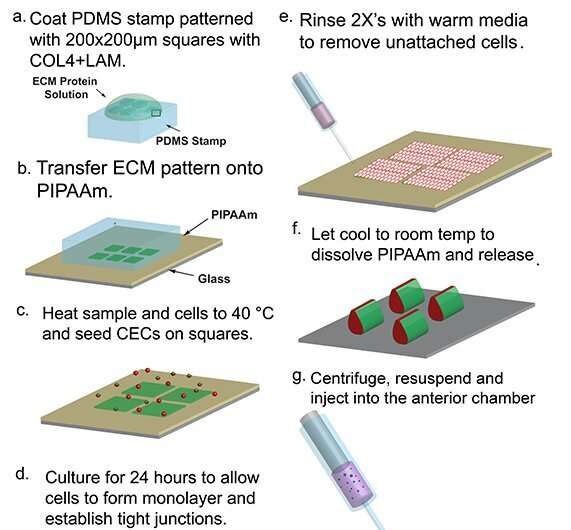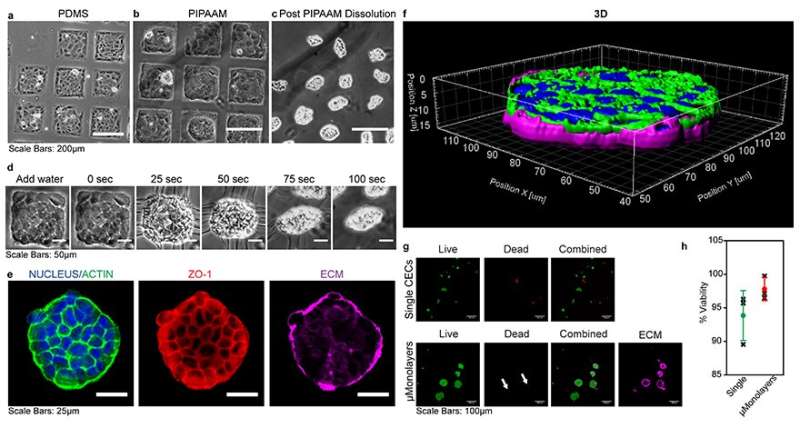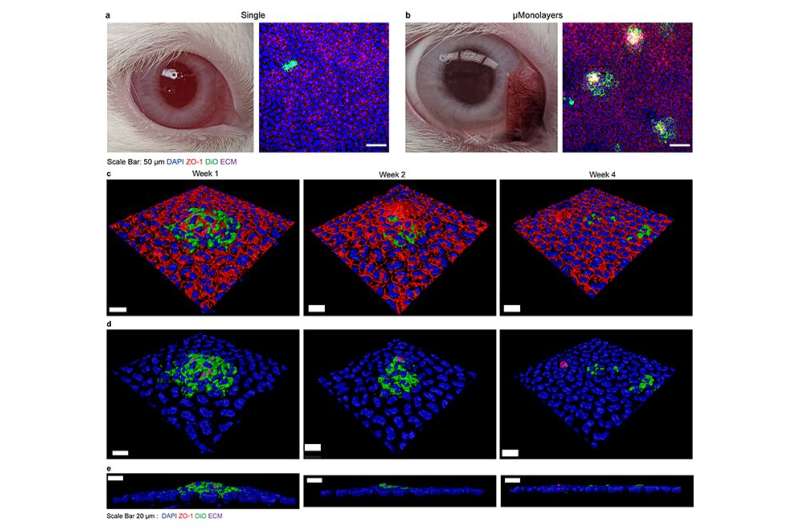Small package could hold big potential to help cell-based therapies

Cell-based therapies have long been thought of as an alternative treatment option for patients with a range of diseases caused by organ and tissue failure, inclusive of heart attack, diabetes, corneal blindness, and cystic fibrosis. While great in theory, in practice, these therapies show limited clinical success in many applications due to low cell viability after injection, as well as poor retention at the injection site and engraftment into damaged tissue. Ongoing research led by Rachelle Palchesko and Adam Feinberg is exploring the use of a new cell delivery method to help cells stick and stay where they're needed most.
More than 50,000 cornea transplant procedures are performed in the United States annually, an impressive statistic that exceeds the number of transplants of all other solid organs combined. In new research published in Communications Materials, CMU and University of Pittsburgh researchers propose using a small package of shrink-wrapped corneal endothelial cells as a potential alternative to cornea transplant when low endothelial cell density is the cause of corneal blindness.
The corneal endothelium (CE) is a single layer of cells that lines the back surface of the cornea and is responsible for maintaining proper corneal thickness and clarity. Nearly half of all cornea transplants stem from failure of the CE, primarily due to a loss of cells that cannot replicate to repair damage or injury.
While some treatments for CE failure exist, chronic rejection and limited donor supply have motivated the development of new methods to inject CE cells to repopulate the corneal endothelium and restore function. Until now, most approaches have required the existing CE to be removed through scraping or cryogenic injury of the cornea to provide a place for the delivered cells to attach.

"You can imagine if you're trying to take a healthy cell and put it in a hostile tissue, it doesn't want to stay there," explained Rachelle Palchesko, special faculty researcher of biomedical engineering. "We had a benchmark for effective application of shrink-wrapped cells in the cornea based on some work a group in Japan was doing, and we knew we could improve upon it. We've been able to show that we can package cells effectively and get them to integrate into high-density tissues, without inducing any injury or removing any cells. Our technology can improve cell therapies and help cells stick and stay where we want them to."
The group's technique utilizes shrink-wrapping micropatterned islands of corneal endothelial cells in a basement membrane-like layer of extracellular matrix that enables the cells to maintain their cell-cell junctions and cytoskeletal structure while in suspension. In a series of studies, the small packages of cells exhibited an ability to rapidly engraft into intact, high-density corneal endothelial monolayers in both in vitro and in vivo model systems.

"The bulk of my research has been in treating corneal blindness; however, we believe this technology has strong potential to be applied to other areas of the body," said Palchesko. "Our group in the lab is investigating how to apply this technology to treat cystic fibrosis or deliver cells after a heart attack."
"Imagine that organ failure could be prevented with a simple injection into the affected tissue instead of waiting for a transplant that may never come," said Adam Feinberg, a professor of biomedical engineering and materials science and engineering. "This is the truly exciting potential of the technology as it is further developed and validated. And we are thankful for the support of the National Institutes of Health and Cystic Fibrosis Foundation in funding this research."
Palchesko added, "This is a simple, effective technology—it's not overly engineered; we're just wrapping up these cells in little packages. I believe we can take it farther and help a lot of people."
More information: Rachelle N. Palchesko et al, In vivo engraftment into the cornea endothelium using extracellular matrix shrink-wrapped cells, Communications Materials (2022). DOI: 10.1038/s43246-022-00247-1



















